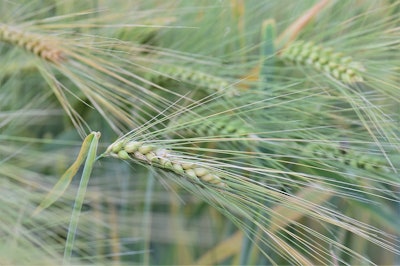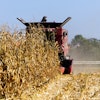
U.S. Crop Progress: HRW Keeps Improving, First National Corn Scores
Monday the USDA’s NASS group released their weekly crop progress report which showed improving winter wheat crops, and initial corn planting scores.
HRW scores keep improving as all states showed declines in the percentages of the crop rated “very poor” and “poor”. Consistent rain throughout much of the key producing states; Oklahoma, Kansas, Nebraska and Colorado has continued to aid the crop development.
SRW condition scores remain mixed with scores in southern growing states showing consistent improvement while the northern states reporting a more fragile crop.
Arkansas’s SRW crop has been the “most improved” over the last month as the percentage rated “very poor” / “poor” has declined from 35% to 9%.
2% of the spring wheat crop is reported as planted.
NASS released their first weekly national corn planting scores for the 2019/20 crop on Monday, 4/8.
Corn was reported as 2% planted. 2% was the same score for the same week in 2018 and the same score as the 5 year average.
What It Means for the U.S. Farmer: The HRW scores continue to point to a crop that is poised for further upside risk and at FBN we believe that further improvement can limit the appreciation of futures prices. Soft wheat scores are encouraging and for the moment the southern scores point to a crop that has stabilized. The reported corn scores are the first of the crop year and don't provide too much guidance.
U.S. Asks China to Review Anti-Dumping Tariffs on U.S. DDGS
China's Ministry of Commerce is set to review its anti-dumping tariffs on imports from the United States of distillers dry grains (DDGS).
The U.S. Grains Council had asked the Chinese commerce ministry to terminate their anti-dumping and anti-subsidy tariffs on American DDGS.
China implemented tariffs on DDGS in 2016.
China set anti-dumping duties of between 42.2% and 53.7% on U.S. DDGS in January 2017, up from 33.8% in preliminary duties implemented in September 2016.
China bought 3 MMT of DDGS in 2016, mainly from the United States.
What It Means for the U.S. Farmer: Absent any details, at FBN we believe that this development could represent a major step forward for U.S./Chinese agricultural trade. While the ethanol refinery would be the primary beneficiary, re-opening the DDGS trade could help margins which can increase the demand for corn and help local basis.
The risk of trading futures, hedging, and speculating can be substantial. FBN BR LLC (NFA ID: 0508695)










